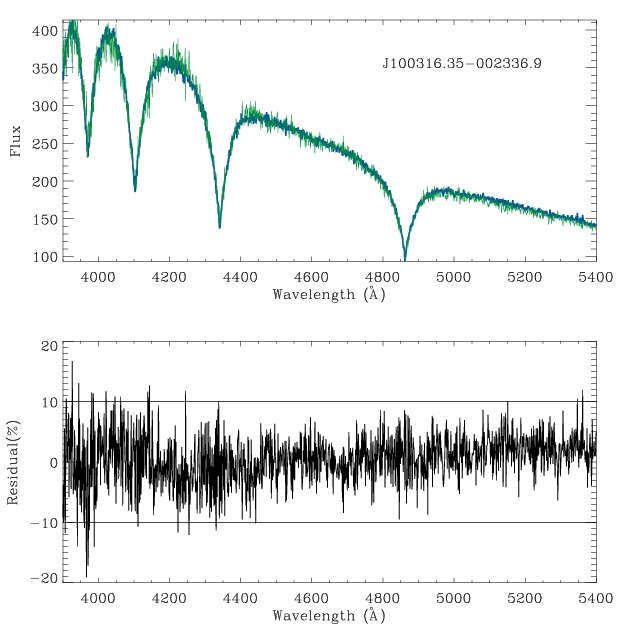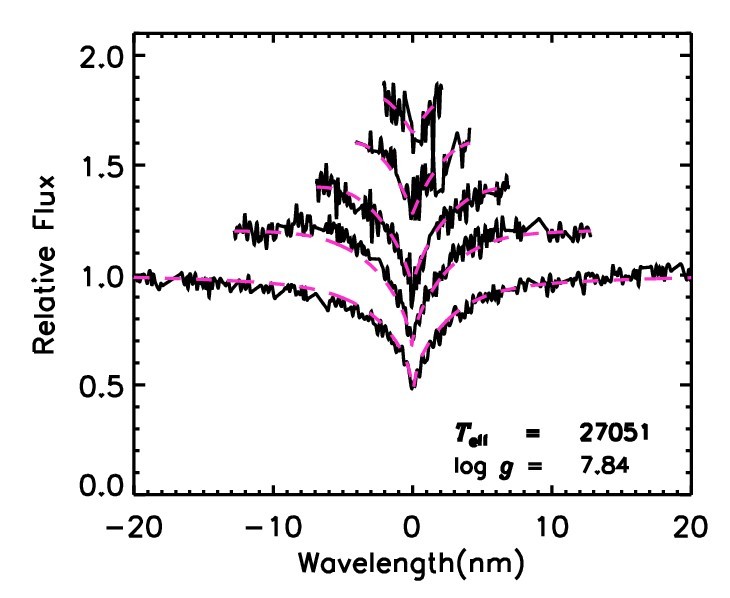You are here
70 DA White Dwarfs Identified in LAMOST Pilot Survey
White dwarfs (WDs) are the final stage for the evolution of the majority of low and medium-mass stars (about 95%) with initial masses < 8 solar mass. Since there is no fusion reaction, the evolution of WDs is primarily determined by a well-understood cooling process. The evolution of WD can be used to limit the age of globular cluster, disk and halo. We identified 70 DA WDs with high signal to noise ratio spectra in LAMOST Pilot survey. 35 are found to be new identifications after cross-correlation with the Eisenstein et al. and Villanova catalogs. Figure 1 shows a portion of a typical spectrum. The top panel compares the SDSS DR7 and LAMOST spectra. For our DA WD candidate, effective temperature (Teff) and gravity (log g) were derived via simultaneous fitting of Hβ to H8 Balmer line profiles (Figure 2). The mass and cooling age were estimated from Bergeron’s cooling sequences. All these WDs are hot (Teff > 12000K). Our sample supports the expectation that WDs with high mass are concentrated near the plane of the Galactic disk after the analysis of mass and kinematics for these WDs.
In June,2013,this important research paper has been published in the well-known international astronomical journal 《Astronomical Journal》.

Figure 1. Comparison of typical SDSS and LAMOST pilot survey WD spectra for star J100316.35−002336.95.In the top panel, the green line is the LAMOST spectrum while the blue line is that from SDSS. The bottom panel presents the residual between the two spectra.

Figure 2. Fits of the observed Balmer lines for J150156.26+302300.13. Lines range from Hβ (bottom) to H8 (top).The solid black line is the observed spectra, while the dashed line is the model spectra.
